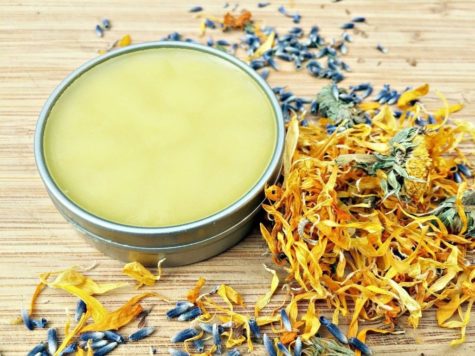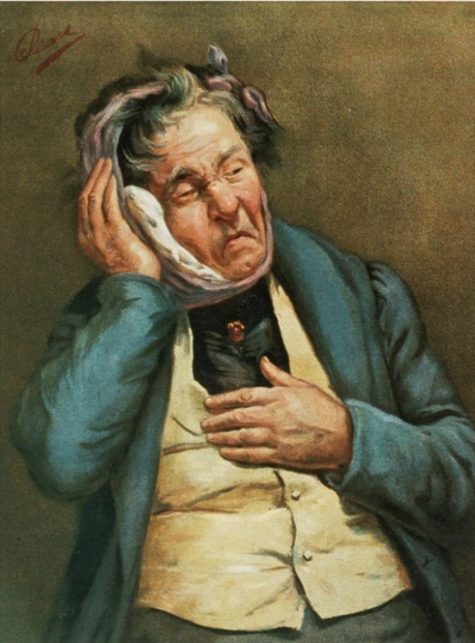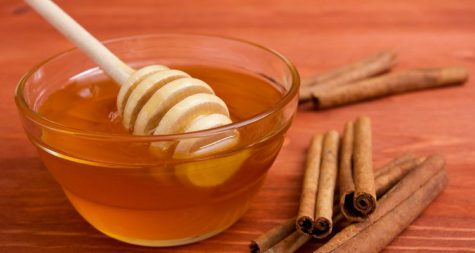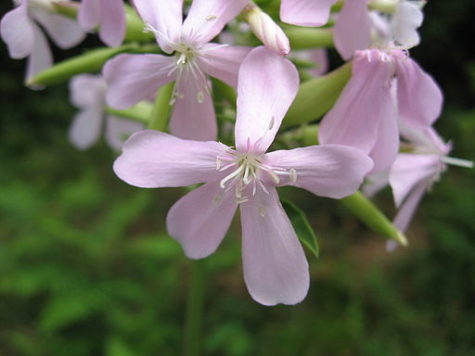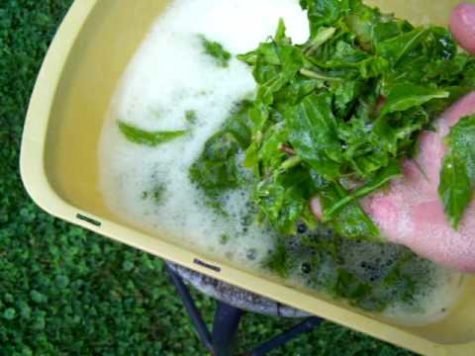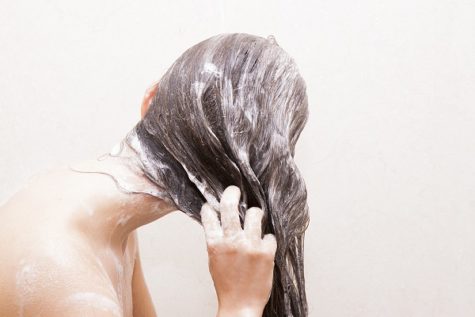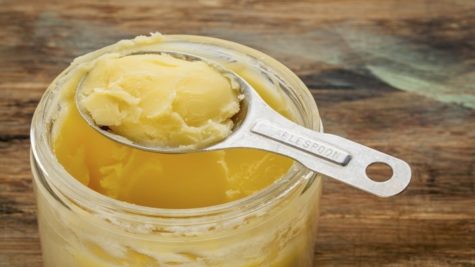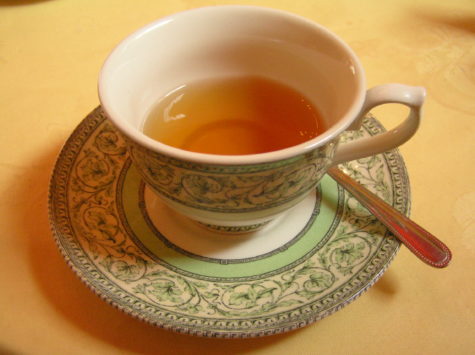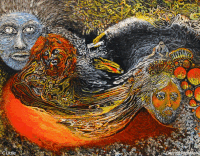Yearly Archives: 2018
How to Make a Tincture
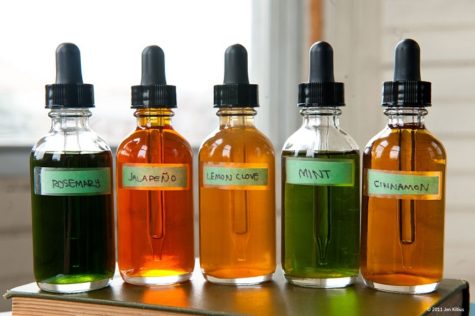
Tinctures are concentrated herbal extracts that are made using alcohol and chopped herbs. The tincture is especially effective in drawing out the essential compounds of plants, especially those that are fibrous or woody, and from roots and resins. Since this method ensures that the herbs and their nutrients can be preserved for a long time, it is often mentioned in herbal books and remedies as a preferred way of using herbs.
Your tincture will not be of the same potency of the tinctures that registered herbalists make because they have access to much stronger alcohol. We use the best quality vodka possible. Although some people say you can use run, brandy or whiskey this changes the flavor. No matter what you choose it must be 40% to prevent mildew starting on the plant material. (For those who cannot drink alcohol use quality apple cider vinegar or glycerin.)
The container for the tincture should be glass or ceramic. Never use a metallic or plastic container because these can react with the tincture or leach dangerous chemicals over time. Items such as a mason jar, a glass bottle with an attached stopper, etc., are ideal for steeping a tincture. You will need to get some small dark glass tincture bottles for storing the tincture in once it has been made; these bottles should have a tight screw-on or tight clip-on lid to prevent air intrusion during storage but to allow for ease of use. Ensure that all containers are both washed clean and sterilized prior to use.
You can prepare a tincture by measurement or by sight; it really depends on your level of comfort with simply adding herbs and judging by eye, or whether you feel more comfortable adding them by measured weight. Also, you should know whether you want to add fresh, powdered, or dried herbs to the tincture. Some suggestions for adding the herbs in the order of fresh, powdered, or dried are as follows:
- Add enough fresh chopped herbs to fill the glass container.
- Cover with alcohol.
- Add 113g of powdered herb with 473ml of alcohol (or vinegar/glycerin).
- Add 198g of dried herb material to 1 liter of alcohol (or vinegar/glycerin).
- Using a butter knife, stir around the edge of the glass container to ensure that all air bubbles are released.
Seal the container. Place it into a cool, dark area (in a cupboard). The container should be stored there minimum 8 days to a month.
- Shake the container twice a day.
- Be sure to label the steeping tincture so that you know what it is and the date on which it was made.
- Keep it out of the reach of children and pets.
Strain the tincture. Once the steeping time is finished (the specific tincture instructions you’re following will inform you of this) strain the tincture as follows:
- Place cheesecloth across a sieve.
- Place a large bowl underneath to catch the strained liquid.
- Gently pour the steeped liquid through the lined sieve. The cheesecloth will capture the plant material.
- Press the herb material with a wooden spoon to squeeze out some more liquid, and then twist the cloth to extract any leftover liquid.
Decant the liquid into a prepared tincture bottle. Use a small funnel for this step if you don’t have a steady hand. Tighten the lid and date and label the tincture.
Store and use:
A tincture can have a shelf life of up to 5 years because alcohol is a preservative. However, know the properties of the particular herbs you’ve used, and follow the guidance of the recipe from which you’re making the tincture in terms of how long to keep the tincture for.
Follow the instructions relevant to your tincture for usage; consult a qualified, reputable herbalist or a health professional if you need more information and bear in mind that herbal treatments can be dangerous if you don’t know the properties of the herb and its consequences.
Found at: Wild Edible Food
How to Make a Healing Salve
The best way to make a salve is to allow your herbs to solar infuse in your choice of carrier oil anywhere between 4 and 6 weeks. Fill (not stuff) a jar with herbs and pour the carrier oil over top.
- Be sure to cover all plant matter and poke out any trapped air bubbles.
- Be sure to use plant matter that has NO moisture on it at all!! (No rain, dew, etc.)
Cover the jar and let sit in a room that gets sunlight but do not place in direct sunlight. It’s a good idea to date the jar so you don’t forget when you started it.
A faster method is to place your herbs and the carrier oil into a Pyrex container over top of a large pot that is about ¼ full of water. Once the water is boiling turn the stove down to a simmer and allow the herb/oil mixture to infuse for about 40 minutes.
DO NOT SPLASH WATER INTO THE HERB/OIL INFUSION!
After either of the above methods, place three layers of cheesecloth over a large bowl. Pour the infused oil over the cheesecloth to strain and be sure to keep herbs out of the oil. Once drained ~ with your clean hands ~ squeeze out remaining oil. After measuring out what you will use to make salve store the remaining oil and again, be sure to date it.
Measure out 114 grams of infused oil (or 4 oz which is ½ cup) and set aside.
Weigh 8 grams of beeswax on a scale. Shave or cut into small pieces your beeswax. Place in a Bain Marie and melt.
Once melted add to the oil and stir well with a clean wooden stick. Test it for hardness by taking a small amount on a spoon and tip it – the mixture should adhere to it. If it is too soft add a tiny bit more melted beeswax.
Add 4 drops of Benzoin oil as a preservative and add a few drops of essential oil for fragrance if desired. Pour mixture into jars. Cap only when cooled. Store in a dark, cool location.
NOTE:
In addition to making salves for muscle aches, skin ailments, or other health ailments, make a health-nourishing salve for your skin. When infusing oil, use vegetables that are well-known for skin health such as broccoli, spinach, bell peppers, asparagus or carrots.
From: Edible Wild Food
Herbal Remedies For Toothache Pain
A toothache is one of the most annoying and painful experiences that one can have. It can really put a damper on someone’s entire day if he or she cannot find something to tame it. Because of the infection that can spread to other parts of the head, without treatment, a bad abscess and toothache can be life threatening. For this reason, it’s important to see a dentist as soon as possible.
If you’re desperate, these inexpensive, effective and easily accessible toothache home remedies may help alleviate your pain before you get to your appointment.
There are quite a few natural herbal remedies that work excellent for calming down a toothache. Whether a person’s pain is from a cavity, recent dental work, injury, or pure sensitivity, herbs provide a safe and natural way for pain management. Listed here in alphabetical order are some very effective herbal remedies for toothache pain.
-
Cayenne pepper:
Cayenne pepper is a well-known herb, contained in most spice cabinets. What is not well known is that cayenne pepper, which contains capsaicin, is good for curing toothache pain. The hot ingredient in it restricts the action of substance P, that plays a role in transmitting pain. To use cayenne for a toothache: Soak a smidge of the powder in a small amount of water, and then using a cotton swab apply it to the tooth.
-
Clove:
Cloves are one of the most popular remedies for a toothache. The distinctive taste of cloves comes from the chemical eugenol, which is an antiseptic. Cloves have a very strong taste, but they quickly relieve tooth and gum pain. The best way to use cloves is to administer them directly to the site of the pain. Clove oil is commonly used for treatment. Few drops of the oil can be applied to the pain area using a cotton swab. If there is a cavity present, the oil can be applied directly over the cavity for maximum results. Chewing clove seeds is equally effective.
-
Garlic:
Garlic is one of the most effective home remedies for tooth pain. There is a chemical found exclusively in garlic called allicin with antibiotic properties that slow down bacterial affects. When the bacteria decrease, so does the pain. By applying a clove of crushed garlic directly on the affected tooth, the allicin is released and should immediately help alleviate the pain.
-
Ginger:
Ginger helps to alleviate toothache pain. The steps for preparing the remedy are: Cut ginger root into small pieces, grind it well and mix it with little water to make a paste. This paste can be applied over the pain area to get some quick relief. Chewing small slices of ginger is also effective, but it is too hot to withstand.
-
Guava Leaves:
Guava tree leaves have been used for this purpose in many tropical cultures. There are 2 common uses. You can chew 1-2 leaves until the liquid comes out on the tooth, or you can put 4-5 guava leaves in a pot with some water. Bring nearly to a boil, then let cool to a warm temperature. Add some salt to the solution, swish or gargle in the mouth and spit. Repeat this process, being sure to allow the liquid to swish into the aching tooth.
-
Ice:
Apply an ice pack to the cheek above the affected tooth. You can also do an acupressure ice massage. Rub an ice cube into the V-shaped area where the bones of the thumb and forefinger meet. Gently push the ice over the area for 5 to 7 minutes.
-
Onion:
Raw onion has antiseptic properties, so chewing raw onion for 3 minutes can help. If it is too painful to chew, you can simply place a piece of raw onion directly on your tooth.
-
Plantain:
Raw plantain leaves crushed and placed on the aching tooth will also help stop a toothache. If you happen to have a little salt with you, mix a little salt with the chewed leaves.
-
Sage:
Garden age serves many medicinal purposes such as calming anxiety and controlling menopausal symptoms. On top of all of its other great abilities, this herb is fantastic for a toothache. The best way to use sage is in the form of infusion or tea. The user can make a strong infusion by boiling the leaves in a cup of water for 10-15 minutes. Holding it in mouth for sometime reduces inflammation and gum infection. Sage will work to calm the toothache and whiten the teeth as well. It has a natural ability to whiten the teeth.
-
Salt and Pepper:
Salt mixed with pepper is an age-old remedy for a toothache. Mix 1/4 teaspoon pepper and 1/4 teaspoon salt with a few drops of water into a paste. Apply directly on the affected tooth and let sit for several minutes.
-
Spinach Leaves:
Raw spinach leaves provide a similar effect to the guava leaves. Simply chew raw spinach leaves against the aching tooth or crush it into a paste to press against the affected area.
-
Tea Tree Oil:
A few drops of tea tree essential oil can be infused in water. Cleansing the mouth with this solution can give rapid relief to inflamed gums. It is a very potent antibacterial.
-
Turmeric:
This herb has anti-inflammatory and antibacterial properties. It is used in several natural tooth care products. The steps for preparing a toothache remedy are: Make a paste with 1 teaspoon turmeric powder and ½ teaspoon salt, mixed with mustard oil (water will do). Applying this paste onto the affected tooth will ease the pain.
-
Vanilla Extract:
Vanilla extract can also help, aided by its alcohol content. Apply 3-4 drops of vanilla extract onto a cotton swab and hold directly against the affected tooth several minutes for immediate relief.
-
Wheatgrass Juice:
Wheatgrass juice is another natural way to stop pain as well as help reverse tooth decay. Being a natural antibiotic, wheatgrass juice naturally draws out toxins that may be in the gums. This toothache home remedy helps stop the infection from spreading which in turn reduces tooth pain. Use wheatgrass juice as a mouthwash to draw out toxins, or you can chew on wheatgrass for similar results.
-
Whiskey:
Take a “shot” to numb the pain. Hold a swig of whiskey over the painful tooth. Your gums will absorb some of the alcohol and that will numb the pain. Spit out the rest (optional).
-
Yarrow:
Yarrow is a natural anesthetic that has a sweet and spicy flavor. It is also widely used for its aroma. Yarrow is also known as the nosebleed plant. It is great for toothaches because it is an anesthetic. However, yarrow also has the ability to stop bleeding and promote wound healing. Because of its usefulness in stopping bleeding the herb was called herbal militaris for almost hundred years. To treat a problem area, one would simply need to apply the extract of roots or leaves to the gums or teeth.
Collected from various sources
A Very Good Remedy For The Gravel
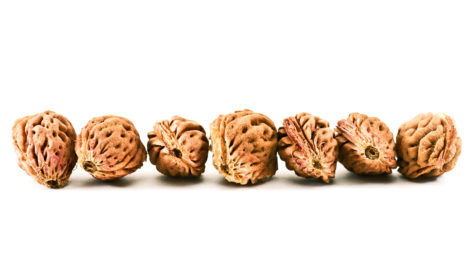 From Pow-Wows, or Long Lost Friend, by John George Hoffman, [1820], we have this “very good remedy” for kidney stones (the gravel).
From Pow-Wows, or Long Lost Friend, by John George Hoffman, [1820], we have this “very good remedy” for kidney stones (the gravel).
The author of this book, John George Hohman, applied this remedy, and soon felt relieved. I knew a man who could find no relief from the medicine of any doctor; he then used the following remedy, to wit:
he ate every morning seven peach-stones before tasting anything else, which relieved him very much;
but as he had the gravel very bad, he was obliged to use it constantly. I, Hoffman, have used it for several weeks. I still feel a touch of it now and then, yet I had it so badly that I cried out aloud every time that I had to make water. I owe a thousand thanks to God and the person who told me of this remedy.
Honey and Cinnamon Cure Alls
It is found that a mix of honey and cinnamon cures most diseases. Honey is produced in most of the countries of the world. Scientists of today also note honey as very effective medicine for all kinds of diseases. Honey can be used without side effects which is also a plus. Today’s science says that even though honey is sweet, when it is taken in the right dosage as a medicine, it does not harm even diabetic patients. Researched by western scientists:
Arthritis:
Arthritis patients can benefit by taking one cup of hot water with two tablespoons of honey and one small teaspoon of cinnamon powder. When taken daily even chronic arthritis can be cured. In a recent research conducted at the Copenhagen University, it was found that when the doctors treated their patients with a mixture of one tablespoon Honey and half teaspoon Cinnamon powder before breakfast, they found that within a week (out of the 200 people so treated) practically 73 patients were totally relieved of pain — and within a month, most all the patients who could not walk or move around because of arthritis now started walking without pain.
Bad Breath:
People of South America, gargle with one teaspoon of honey and cinnamon powder mixed in hot water first thing in the morning so their breath stays fresh throughout the day.
Bladder Infections:
Take two tablespoons of cinnamon powder and one teaspoon of honey in a glass of lukewarm water and drink it. It destroys the germs in the bladder….who knew?
Cancer:
Recent research in Japan and Australia has revealed that advanced cancer of the stomach and bones have been cured successfully. Patients suffering from these kinds of cancer should daily take one tablespoon of honey with one teaspoon of cinnamon powder three times a day for one month.
Cholesterol:
Two tablespoons of honey and three teaspoons of Cinnamon Powder mixed in 16 ounces of tea water given to a cholesterol patient was found to reduce the level of cholesterol in the blood by 10 percent within two hours. As mentioned for arthritic patients, when taken three times a day, any chronic cholesterol-could be cured. According to information received in the said Journal, pure honey taken with food daily relieves complaints of cholesterol.
Colds:
Those suffering from common or severe colds should take one tablespoon lukewarm honey with 1/4 spoon cinnamon powder daily for three days. This process will cure most chronic cough, cold, and, clear the sinuses, and it’s delicious too!
Diabetes:
Cinnamon reduces blood sugar levels and increases insulin sensitivity. It might help prevent diabetes altogether, and support diabetics in managing their blood sugar levels.
While honey still contains sugar (quick-burning carbs) it doesn’t affect blood sugar levels as much as regular sugar. Of course, the key is also to combine a small amount of honey with cinnamon. This way the cinnamon can work to keep your blood sugar levels steadier than if you ate honey alone.
Fatigue:
Recent studies have shown that the sugar content of honey is more helpful rather than being detrimental to the strength of the body. Senior citizens who take honey and cinnamon powder in equal parts are more alert and flexible. Dr. Milton, who has done research, says that a half tablespoon of honey taken in a glass of water and sprinkled with cinnamon powder, even when the vitality of the body starts to decrease, when taken daily after brushing and in the afternoon at about 3:00 P.M., the vitality of the body increases within a week.
Gas or Flatulence:
According to the studies done in India and Japan, it is revealed that when Honey is taken with cinnamon powder the stomach is relieved of gas.
Hair loss:
Those suffering from hair loss or baldness, may apply a paste of hot olive oil, 1 tablespoon of honey and 1 tteaspoon of cinnamon powder before a bath and keep it on for approx 15 minutes and then wash the hair. It was found very effective if kept for 5 minutes also.
Hearing Loss:
Daily morning and night honey and cinnamon powder, taken in equal parts restores hearing.
Heart Diseases:
Make a paste of honey and cinnamon powder, put it on toast instead of jelly and jam and eat it regularly for breakfast. It reduces the cholesterol and could potentially save one from heart attack. Also, even if you have already had an attack studies show you could be kept miles away from the next attack. Regular use of cinnamon honey strengthens the heart beat.
In America and Canada, various nursing homes have treated patients successfully and have found that as one ages the arteries and veins lose their flexibility and get clogged; honey and cinnamon revitalize the arteries and the veins.
Immune System:
Daily use of honey and cinnamon powder strengthens the immune system and protects the body from bacterial and viral attacks. Scientists have found that honey has various vitamins and iron in large amounts. Constant use of Honey strengthens the white blood corpuscles (where DNA is contained) to fight bacterial and viral diseases.
Indigestion:
Cinnamon powder sprinkled on two tablespoons of honey taken before food is eaten relieves acidity and digests the heaviest of meals.
Infertility:
Yunani and Ayurvedic have been using honey for years in medicine to strengthen the semen of men. If impotent men regularly take 2 tablespoon of honey before sleeping their problem will be solved. In china, Japan and far-east countries, women who do not conceive may take a pinch of cinnamon powder in half tsp honey and apply it on the gums frequently throughout the day, so that it slowly mixes with the saliva and enters the body.
A couple in Maryland , America had no children for 14 years and had no hope of having a child of their own. When told about this process husband and wife started taking honey and cinnamon as stated, the wife conceived after a few months and had twins at full term.
Influenza:
A scientist in Spain has proved that honey contains a natural ‘Ingredient’ which kills the influenza germs and saves the patient from flu.
Longevity:
Tea made with honey and cinnamon powder, when taken regularly, arrests the ravages of old age. Use four teaspoons of honey, one teaspoon of cinnamon powder, and three cups of boiling water to make a tea. Drink 1/4 cup, three to four times a day. It keeps the skin fresh and soft and arrests old age. Life spans increase and even a 100 year old will start performing the chores of a 20-year-old.
Pimples:
Three tablespoons of honey and one teaspoon of cinnamon powder paste. Apply this paste on the pimples before sleeping and wash it off the next morning with warm water. When done daily for two weeks, it removes all pimples from the root.
Raspy or Sore Throat:
When throat has a tickle or is raspy, take one tablespoon of honey and sip until gone. Repeat every three hours until throat is without symptoms.
Skin Infections:
Applying honey and cinnamon powder in equal parts on the affected parts cures eczema, ringworm and all types of skin Infections.
Toothache:
Make a paste of 1 tsp of cinnamon powder and 5 teaspoons honey and apply on the aching tooth. This may be done 3 times a day daily till such time the pain subsides.
Upset Stomach:
Honey taken with cinnamon powder cures stomach ache and also is said to clear stomach ulcers from its root.
Weight Loss:
Daily in the morning one half hour before breakfast and on an empty stomach, and at night before sleeping, drink honey and cinnamon powder boiled in one cup of water. When taken regularly, it reduces the weight of even the most obese person. Also, drinking this mixture regularly does not allow the fat to accumulate in the body even though the person may eat a high calorie diet.
Source: Jim Power
Soapwort Shampoo
Soapwort is easy to grow – in fact, it is rather invasive and aggressive. It is steadily winning against the mint that I planted in the same pot as an experiment to see who was stronger! It is also important to keep in mind that the very same properties that make soapwort a useful plant can also cause harm if you plant it too close to water features or ponds. The saponins in the plant can kill fish and other water creatures, but the saponins are what make this beautiful plant so wonderful!
Saponins are the part of the plant chemistry that create a soap-like cleaning action. Soapwort does not produce big bubbles like one might come to expect from soap, but the gentle soapwort infusion is a truly effective cleanser that doesn’t irritate the skin.
Harvest the tops, stems, and roots of soapwort. The whole plant works, and since it is such a quick grower, don’t be afraid to just continually harvest parts throughout the spring and summer when the flowers are blooming. Dry the plants and use them throughout the fall and winter as well.
Soapwort shampoo is a gentle cleanser for sensitive skin and dry hair. It cleans enough to leave you squeaky and fresh, but it does not strip all of the good and necessary oils away. People with chronic acne, psoriasis, or other sore skin problems can generally use soapwort infusion to clean without issues.
Simple Soapwort Shampoo
Here’s how you can make shampoo and body wash from either fresh or dried soapwort!
Ingredients
- 3 tablespoons fresh soapwort or 1 tablespoon dried
- 1 cup water
Directions
- Boil the water and add the soapwort leaves.
- Cover the pan and turn it down to a simmer for fifteen minutes.
- Let everything cool off.
- Strain the infusion through a clean kitchen towel or cheesecloth into a jar or bottle.
- That’s it!
Give the jar or bottle a good shake to bring out the bubbles and pour it in your wet hair while you shower. Use your fingertips to massage your scalp. Soapwort infusion is not as bubbly as regular shampoo, but you’ll notice your hair is squeaky clean when you rinse.
You can also add any of the following herbs for skin and hair to the pot with the soapwort:
- Mint
- Lavender
- Rose Petals
- Hibiscus (red hair)
- Chamomile (fair hair)
- Rosemary (dark hair)
- Nettles
- Sage
- Calendula
You can follow it up with a vinegar rinse, or use any of the above herbs brewed as tea for a conditioning rinse.
Soapwort Shampoo with Lemon and Catnip
Lemon Verbena for a citrus fragrance and catnip to promote healthy hair growth.
The Ingredients
- 2 cups distilled water
- 1 1/2 tablespoons dried soapwort root (chopped) (most health food stores would carry this)
- 2 teaspoons Lemon Verbena and/or 2 teaspoons Catnip
The Instructions
Bring water to a boil add soapwort and simmer, cover for about 20 minutes. Remove from heat, add herbs then allow mixture to cool. Strain the mixture keeping the liquid. Pour into a bottle. Makes enough for 6-7 shampoos. Must be used within 8-10 days. Store in a cool dark place.
Sources:
A Healing Herbal Balm
- Calendula (Calendula officinalis)
- Plantain (Plantago major)
This sweet-smelling balm soothes and protects cuts and scrapes. And it’s so gentle you can even use it on diaper rash. Calendula and plantain are known for their ability to speed skin healing. Both soften skin, relieve pain, and are antibacterial.
First make an herb-infused oil. In a large glass jar, combine the following:
- 2 tablespoons crushed Calendula flowers
- 2 tablespoons dried Plantain leaves
- 1/3 c of extra-virgin olive oil
Leave uncovered, and place in a pan filled with enough water to cover the lower half of the jar. Set the burner on very low heat and simmer gently for about 4 hours. Check the oil periodically to be sure it’s not scorching; don’t let it boil. (You can also make the infused oil in a Crock-Pot set on very low without a lid.) After the allotted time, remove the oil from the heat and allow it to cool completely. Strain away the herbs through several layers of cheesecloth and discard.
To make the balm, combine the following:
- The oil you just infused
- 1 or 2 tablespoon of grated beeswax
Put it into a small stainless steel bowl; set the bowl into a pot of water and heat just until the beeswax melts, stirring gently to help the melting. To test the consistency, insert a cool metal spoon into the balm and check the balm that sticks to the spoon; it should be spreadable but firm. If it’s too oily, add another few shavings of beeswax.
At this point, you can add a natural preservative to your balm to prevent spoilage. Vitamin E, squeezed from capsules, works very well. Rosemary extracts or oil might improve the aroma and antiseptic properties as well. You’ll need about 1/4 tsp. (two capsules) to preserve this much balm. After you’ve blended in the vitamin E, transfer your final product to a sterile glass jar. Use a clean spoon or small spatula to transfer the balm to avoid introducing bacteria to the jar.
How to use it:
Apply the balm to rashes, scrapes, and other small or superficial abrasions (don’t use it on deep cuts). You can also apply it regularly to help heal chronically chapped skin. Stored in a cool, dark place, the balm should keep for up to a year. Discard if it smells rancid.
A Good Healing Tea
A good healing tea is made as follows:
- A pinch of peppermint
- A pinch of powdered ginger
- A pinch of clove powder or 2 bruised cloves
- One cup water
To prepare the tea:
Boil the water but do not use an aluminum kettle. Pour water into a mug or pot leaving herbs to steep for at least five minutes, but don’t leave for longer than ten minutes or the tea may become bitter. For stronger tea, use more herb rather than steeping the tea for a longer time. Sweeten with honey if desired.
Ginger Tea For Pain
For pain, soak cloths in ginger tea and apply them directly to the painful areas.
To prepare the tea, chop the ginger root into small pieces. Use approximately one to three teaspoons of herb per cup of boiling water. Ginger is very strong, so if you have never used it before, start with the lesser amount of herb. Boil water but do not use an aluminum kettle. Pour water into a mug or pot leaving herbs to steep for at least five minutes, but don’t leave for longer than ten minutes or the tea may become bitter. For stronger tea, use more herb rather than steeping the tea for a longer time.
Herbs for Pregnancy and Childbirth
The following herbs are said to be good for pregnancy and childbirth:
- Alfalfa
This is one of the few plant sources of vitamin K (necessary for blood clotting). It also contains eight digestive enzymes, numerous trace minerals and high quantities of vitamins A, D and E.
- Chamomile
This is a great calming agent and helps with digestive disorders including nausea. It also has some anti-inflammatory properties.
- Nettles
These contain high levels of calcium, iron and protein, and is an excellent herb for nourishing mothers who are feeling depleted.
- Oatstraw
This is high in calcium and magnesium. It also calms nervous stress and tension, and is an effective remedy for yeast infections.
- Red Raspberry Leaf
This is an herb rich in numerous vitamins and minerals, especially iron. It also nourishes the uterus, soothes nausea, helps prevent miscarriage, eases labor pains and builds a healthy breast milk supply.
- Rose Hips
These are a great source of vitamin C and help fight infection and exhaustion.
Saida: Salves To Heal Up Wounds
Brenda-Lee: Egg White Cough Cure
Pat Scott: Marsh Mallow Ointment
Sharon from Cleveland, Ohio: Egg White Cough Cure
Vagabond Witch: Soapwort Shampoo
